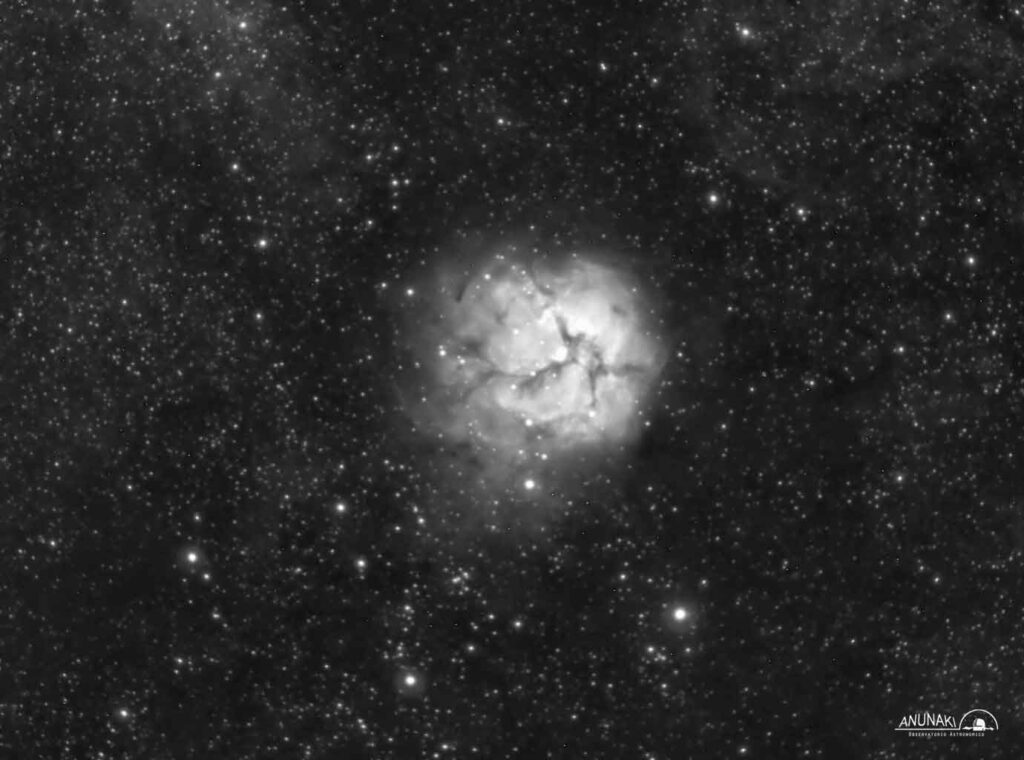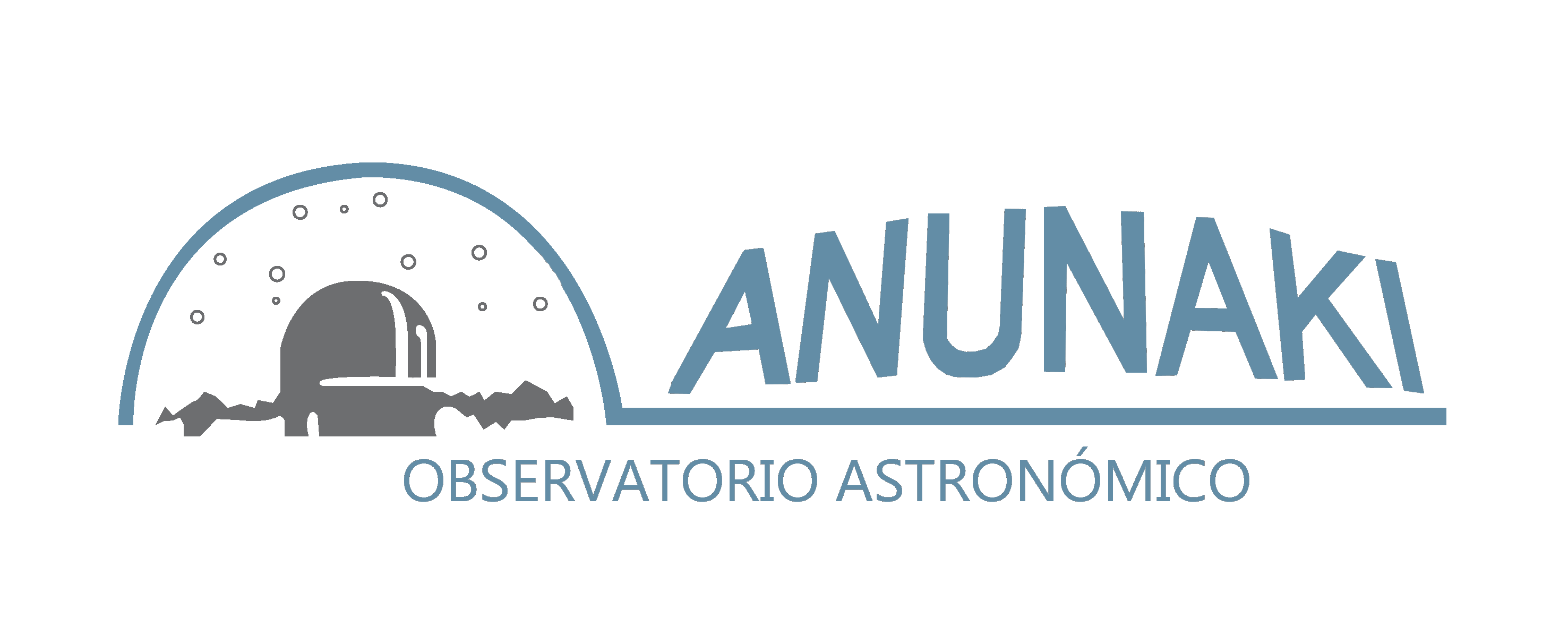The Trifida Nebula (also known as Messier 20 and NGC 6514) is an H II region in the constellation Sagittarius. It was first catalogued in 1764 by the French astronomer Charles Messier. The name “Trifid”, coined by astronomer John Herschel, means “divided into three lobes”, since its most outstanding feature is the appearance of three bright lobes, separated by dark lines of dust.
The Tripid Nebula, which is a nebula of both emission and reflection, and absorption at the same time, has an apparent brightness of +6.3 magnitudes. At the center of the Trifid Nebula is the open cluster Collinder 360 (C1759-230), whose brightest star is HD164492A, a blue giant star of spectral type O. Using precise trigonometric parallax measurements, the Gaia satellite determined that the average distance between Earth and the stars of the cluster is 4120 light-years with a relative error of 6%.

Technical data:
Telescope: S/C 8″
CCD:Atik314L+
Focal Length Reducer: Meade 6.3
Filters: Ha 12nm
Telescope Guide: SkyWatcher ED80
Mount: LX200 GPSR
Guide CCD: QHY5
CCD Temp:-5º
Ambient Temp:0º
Location: Anunaki Observatory / Rivas Vaciamadrid (Madrid)
Messier 20 is one of the large gaseous nebulae in the Sagittarius region; It is located at 1.3° of the Laguna Nebula (M8). Inside the nebula, numerous young stellar objects, protoplanetary disks and Herbig-Haro objects have been discovered. Of the latter is the remarkable HH399, located at the head of a pillar of dust photoevaporated by the ionizing radiation of the star HD 164492A. The presence of these objects indicates that the nebula continues to form new stars.
